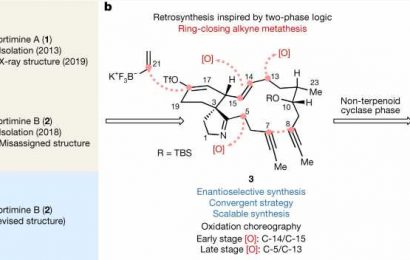NEW YORK (Reuters Health) – Verubecestat, a beta-site amyloid precursor protein-cleaving enzyme 1 (BACE1) inhibitor originally developed to treat Alzheimer’s disease, showed promise against glioblastoma in a preclinical study.
“Because BACE1 inhibition by MK-8931 (verubecestat) is well-tolerated in healthy adults and Alzheimer disease patients, and it penetrates the blood-brain barrier very well, repurposing MK-8931 for macrophage-based cancer therapy for lethal tumors, including glioblastoma, should be straightforward, safe, and promising,” Dr. Shideng Bao of the Cleveland Clinic told Reuters Health by email.
“This macrophage-based therapy with a BACE1 inhibitor such as verubecestat not only promotes macrophage phagocytosis to engulf cancer cells, but may also re-modulate the tumor immune microenvironment to overcome therapeutic resistance, including resistance to current T cell-based immunotherapy,” he said.
Glioblastoma contains high levels of tumor-associated macrophages (TAMs). Most TAMs are tumor-promoting macrophages (pTAMs), although there are also tumor-suppressive macrophages (sTAMs). Therefore, reprogramming pTAMs into sTAMs is an attractive therapeutic strategy, Dr. Bao and colleagues explain in Nature Cancer.
By screening a collection of small-molecule compounds, the team discovered that inhibiting BACE1 with MK-8931 robustly does just that: it reprograms pTAMs into sTAMs, thereby promoting macrophage phagocytosis of glioma cells.
Additional experiments in mouse models showed that low-dose radiation enhances TAM infiltration and synergizes with MK-8931 to suppress malignant growth.
The work to date suggests that verubecestat’s ability to transform pTAMs into sTAMs may be related to the activity of three molecules: interleukin 6, its receptor sIL-6R, and STAT3 (signal transducer and activator of transcription 3). Together with BACE1, which is more abundantly expressed on pTAMs than on sTAMs, these molecules form a signaling cascade that helps maintain the pro-cancer properties of pTAMs.
Inhibiting BACE1 with verubecestat disrupts this signaling pathway.
Dr. Bao said, “We are performing more pre-clinical studies in other tumor models such as brain metastases of lung cancer, to determine whether macrophage-based therapy with MK-8931 can suppress malignant growth of other lethal tumors, because most malignant cancers contain abundant TAMs. In addition, we are trying to initiate a clinical trial using MK-8931 for glioblastoma treatment.”
Dr. Michele De Palma of the Swiss Federal Institute of Technology in Lausanne, coauthor of a related editorial, commented in an email to Reuters Health, “The clinical implications of the study are difficult to establish, as high-grade human gliomas have proven highly resistant to a multitude of treatments previously developed for this disease.”
“Macrophages are attractive targets in cancer therapy, but an early clinical trial that tested the effects of inhibiting or reprogramming macrophages in patients with recurred glioblastoma showed no signs of efficacy,” she said. “That trial used a CSF1R inhibitor that either depletes or reprograms macrophages to an anti-tumoral phenotype.”
“The mode of action of verubecestat is different from a CSF1R inhibitor, and the drug has already been tested in the clinics for Alzheimer’s disease,” she said, “so repurposing verubecestat may provide a new therapeutic opportunity for patients with recurred or inoperable glioblastoma.”
However, she added, “several clinical trials have tested CD47 blockade – a treatment that should elicit macrophage phagocytosis of cancer cells – in patients with cancer, but the results of such trials have largely been negative, at least in monotherapy. This emphasizes the challenges of effectively instructing macrophages to clear cancer cells in the clinical setting.”
Nonetheless, Dr. De Palma concluded, “Further pre-clinical studies (with verubecestat) should be performed – for example, using glioma models that better reflect the genetics and histopathology of human glioblastoma.”
SOURCE: https://go.nature.com/3dhnVXT Nature Cancer, online November 8, 2021.
Source: Read Full Article


